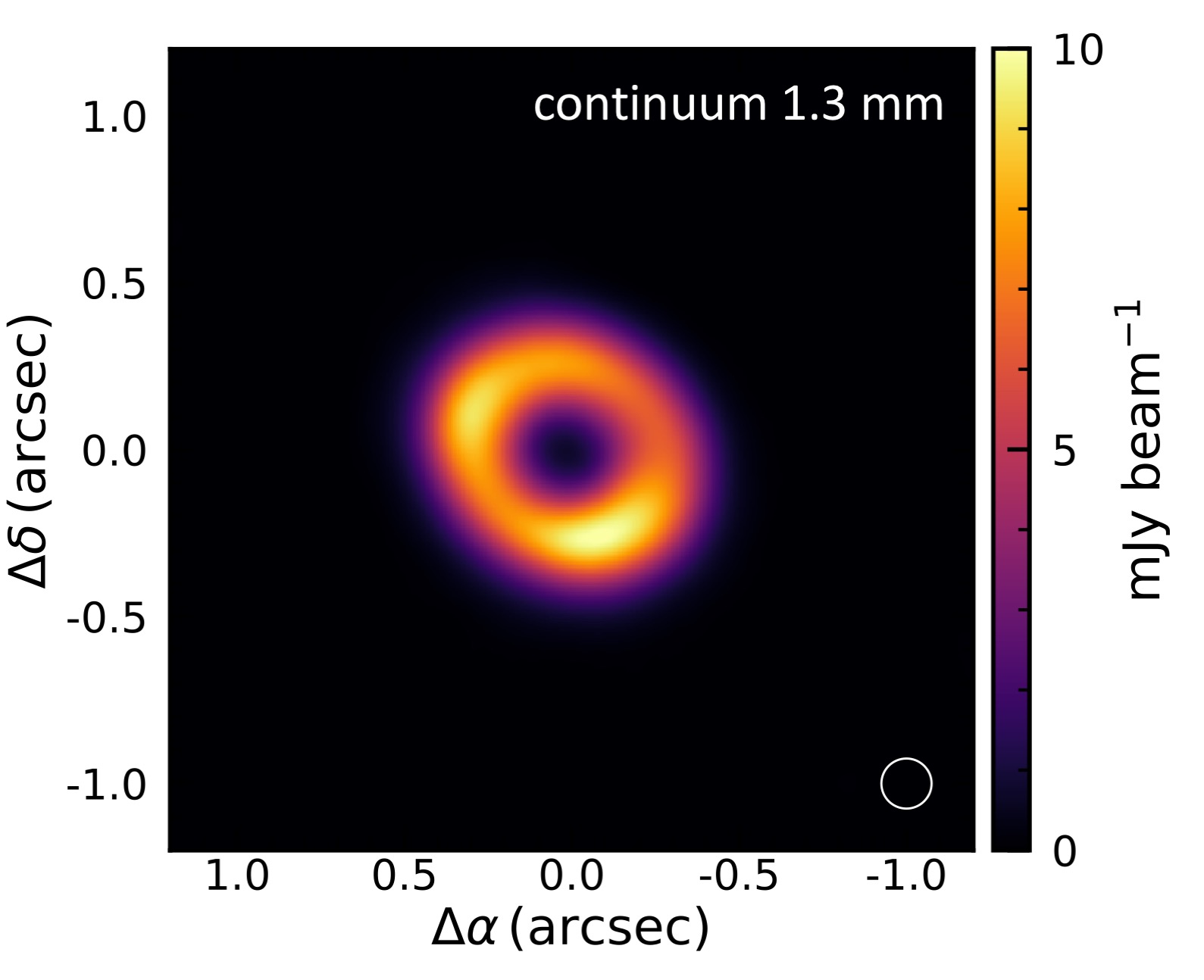Constraining disc-planet interaction through high resolution disc imaging

In the frame of WP1, the Dustbusters’ Team plans to obtain high-resolution images with ALMA and SPHERE of several individual planet-forming discs. We have already provided detailed observations and modeling of interesting systems, such as HL Tau, HD163296, CQ Tau, and we are progressively extending our modeling to many other interesting sources, showing evidences of dynamical interactions (gaps, spirals, shadows, warps).
The multi-wavelength interferometric datasets will be analyzed self-consistently with state of-the-art modelling tools such as the GPU-accelerated library GALARIO, that allows an exhaustive comparison of disc model predictions to the observed visibilities on very short timescales. The molecular substructure in discs will be compared to state-of-the-art thermo-chemical models using the code DALI, to provide accurate diagnostics for disc substructures. Hydrodynamical modeling will employ both SPH codes, such as PHANTOM and grid-based ones, such as FARGO3D.
The goals of WP1 are:
- Complete the combined analysis of ALMA and VLA datasets for all the discs for which we have fresh data;
- Derive radial gas surface density profiles and evaluate the presence of gaps in the gas distribution, which would indicate the presence of massive planets;
- Detect or put significative limits on planetary mass companions in the discs, using near infrared high contrast imaging;
- Compare the results for the various discs with detailed numerical simulations produced as part of other work packages.
